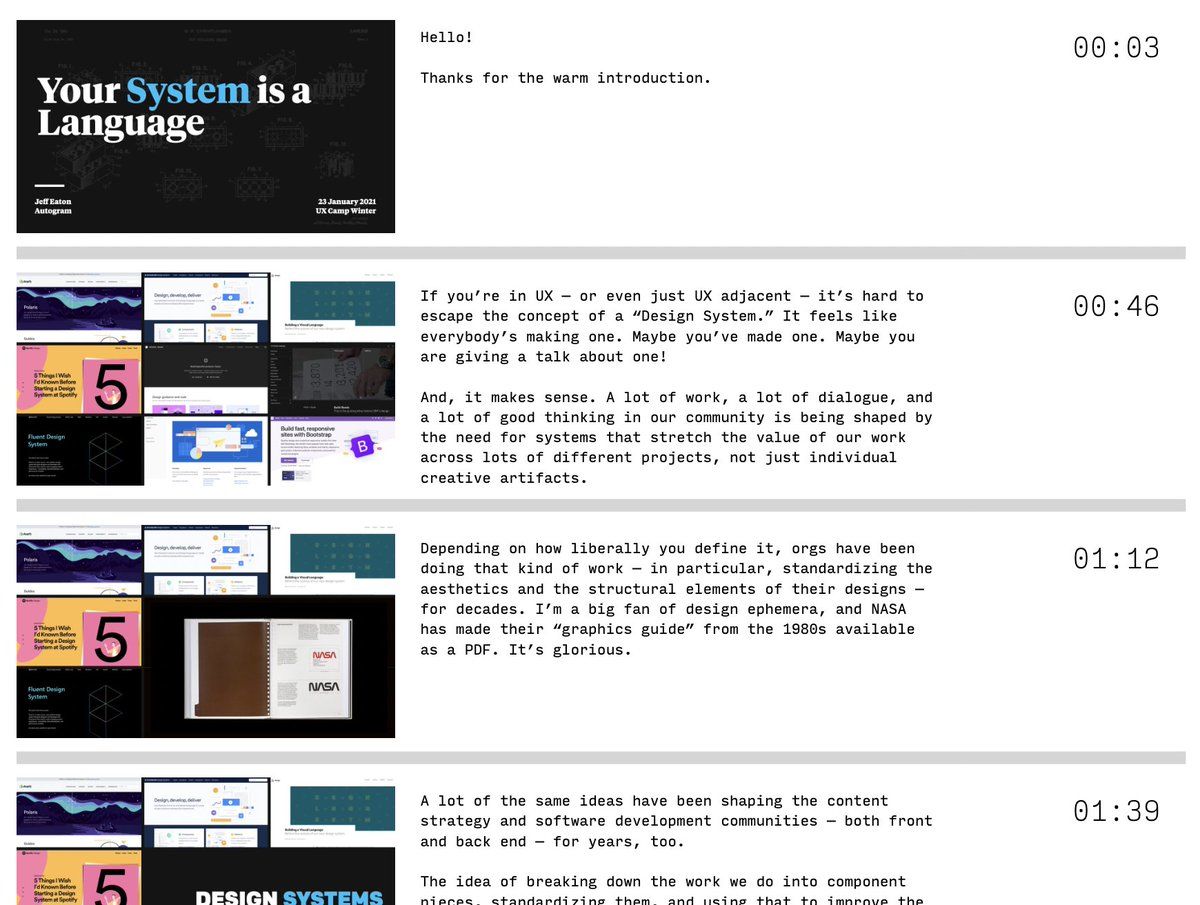Some thoughts on this weekend’s talk (“Your System Is A Language…”) at #UXCamp — the shift to remote talks has been tricky for a lot of speakers I know, because the ability to read the audience is… well, almost non-existent!
Doubly tough with a new talk, where you don’t yet have a great feel for the rhythm of it yet, and are hoping to weigh an audience’s reaction to figure out what works and what doesn’t.
Historically, I’ve always shied away from fully scripting out talks — usually I rely on a pile of key points, notes about potential digressions depending on what everyone responds well to, etc… but that falls apart without the room full of live feedback.
So, for this talk — the first one I’ve written in a long time with a full “remote conference experience” in mind from ground zero — I bit the bullet and wrote out a real script, relying on Keynote’s presenter notes to keep slide transitions aligned.
However, that can make it tough to judge timing — no matter how much I try, some slides just need more time to talk through and explain a concept; some work better as quick hits to punctuate an idea, etc.
This was compounded by the fact that I learned — with just two weeks to spare! — that the remote presentation/talk software we’d be using… wouldn’t support speaker notes. I’d have to keep them in another window, and make sure I didn’t fall out of sync with the slides. Stress!
The solution (other than a lot of practice, which helped) was a simple Numbers template. I exported the slides to a folder full of JPEGs, dragged each one to the first column of a row in the spreadsheet, and put the speaker notes in the second.
…And then added a third column that counted the words in each slide’s notes, multiplied it by my average speaking rate, and displayed the “correct” timing on a slide-by-slide basis. It ended up being simple, and worked like a charm.
On presentation day I popped it just beneath my webcam, and was able to scroll through it like a teleprompter — with obvious transitions where I needed to advance slides, AND timing to remind me if I was rushing or falling off pace.

As an added bonus, it was pretty close to the format I’ve been considering for “webified” versions of my older talks — easy to shift over, certainly much easier than starting with ad-libbed material and using automated transcription.
In any case… not sure if others are interested in the nitty gritty of talk prep, or the nerdy side of getting things ready, but I’m really pleased with how it came together, especially for a short talk with less slack in the timing.